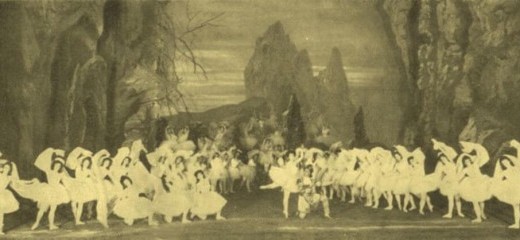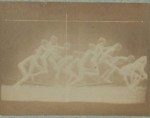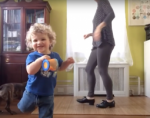
Photographer unknown
A Ballet Biography: Marius Petipa’s Life and Work
by Lynn Matluck Brooks
The fact that renowned
ballet master and choreographer Marius Petipa (1818–1910) has not, until now, been the subject of a full-fledged biography came as a shock to me. Well, not really. As a dance historian, I’m aware of the many lacunae in the researched history of our art and of the difficulties in achieving publication of documentary dance-history studies. Thus,
Nadine Meisner’s Marius Petipa: The Emperor’s Ballet Master, about the French dancer who served the tsar for over 60 years as leader of Russia’s Imperial Ballet, constitutes an essential addition to dance literature. While other scholarly publications have grappled seriously with the great choreographer’s work,* Meisner’s is the first to delve into the context of Petipa’s life and professional achievement, from start to finish, and beyond.
In ten chapters, plus an opening “Overture” and closing “Apotheosis,” Meisner’s biography offers a rich history of the founding and development of Russian ballet before Petipa’s arrival in St. Petersburg in 1847, as well as an evaluation of his influence on ballet after his forced retirement, at age 87, in 1905. Meisner’s writing is elegant, never obtusely theoretical; yet she manages to interweave critical themes to create a picture not only of the man, but also of the nation Petipa served, and of the cultural winds blowing through and stirring within that remote, artistically-engaged land.
Among the riches I gleaned from this biography was a picture of the circulation of ballets, ballet masters, composers, and dancers throughout Europe, from London to Moscow, from Sweden to Spain. Names with reverential resonance (for me) fill the book’s pages. Among the ballets discussed, a small portion of the works Petipa created, collaborated on, or restaged are still performed:
Paquita,
Le Corsaire,
Don Quixote,
La Bayadère [Pennsylvania Ballet performed
a version of this work in March 2020],
La Vivandière,
Giselle,
Coppélia,
Esmeralda,
The Sleeping Beauty,
La Sylphide,
The Nutcracker,
Swan Lake,
Raymonda, and
Harlequinade. Ballet masters and choreographers whom Petipa worked alongside, or whose work he knew well enough to restage, included Jean Coralli, Lev Ivanov, Joseph Mazilier, Jules Perrot, Jean Petipa (Marius’ father), Lucien Petipa (Marius’ brother), Arthur Saint-Léon, and Filippo Taglioni. Then there are the composers—Léo Delibes, Riccardo Drigo, Alexander Glazunov, Ludwig Minkus, Cesare Pugni, Nikolai Rimsky-Korsakov, and Pyotr Ilyich Tchaikovsky, among others. And the dancers!—Russians, mostly trained by Petipa, such as Liubov Egorova, Mikhail Fokine, Pavel Gerdt, Tamara Karsavina, Matilda Kshesinskaya, Nikolai and Sergei Legat, Vaslav Nijinsky, Anna Pavlova, Olga Preobrazhenskaya, and Agrippina Vaganova; and “imported” stars, many leaving their mark on Russian ballet as well as on dance cultures throughout Europe and America, including Carlotta Brianza, Enrico Cecchetti, Fanny Elssler, Pierina Legnani, Marie Taglioni, and Virginia Zucchi. What a rich world Petipa moved within, and shaped!
Petipa the man emerges three-dimensionally in these pages. His family’s long theatrical history served him well, not only in the air he breathed from infancy onward, but also as a network for connecting to the people and trends of Western European dance. In fact, generations of Petipas were dancers, actors, or singers, both before and after Marius. His fanatical work ethic contributed to the firm discipline and high quality of Russian ballet artists, but also led to reports of his irascible temper. Perhaps the pressures of work—teaching, rehearsing, writing libretti, choreographing, appeasing the powers at play—were partially to blame for such flare-ups. He also failed to control his violence toward his first wife, dancer Maria Surovshchikova-Petipa (pp. 124–27), from whom he separated in 1867. Yet Petipa’s daughter Vera, by a late second marriage, remembered him as a “dear father, who surrounded my childhood and youth with loving care” (p. 288). Perhaps, with time, he’d learned.
The book brings out the political and cultural complexities that Petipa navigated, particularly as a Frenchman in Russia: He never mastered the language of his adopted land, although he was deeply loyal to the imperial powers and regarded Russia as his home. While imperial tastes had long swung toward the West (France especially), surges of Russianism swept the nation, pushing Petipa in new creative directions. Inflexible imperial control of official theater life left him at the mercy of bureaucrats, some—particularly Vladimir Teliakovsky—determined to oppose and demote him. Not only that, but the tsar and his immediate family intervened personally in artistic decisions, partly owing to their belief that the arts allowed them influence over national morale and morality, and partly because grand dukes and princes formed liaisons with favored ballerinas. This gave certain dancers, like the wily Kshesinskaya, intolerable (to Petipa and others) power within the company. The tsar’s taste for large-scale, spectacular works put Petipa in constant negotiation and collaboration with librettists, designers, composers, and directors, not to mention the enormous, ever-changing casts he fielded. While primarily associated with the St. Petersburg ballet establishment, Petipa also traveled to and set works in Moscow, spreading his influence to a company of a very different flavor.
Among my favorite aspects of the book are Meisner’s analyses of Petipa’s choreographic structures, his blending of pure dance with mime and “national” dances from around Europe, his balletic language, and his adaptation to developments in dance technique. Chapter 6, “Questions of Style and Structure,” was richest in this regard, but such discussions arise throughout the book, evidencing Petipa’s artistic growth and creative fertility. Meisner’s highlighting of ways that Petipa foreshadowed later trends—setting ballets to great music, rather than to formulaic compositions; the move toward “plotless” ballets in his pure-dance variations—were eye-opening.
Don’t be put off by the book’s 497-page length. The actual biography concludes on p. 295, the remainder being material that only deep-diving historians might choose to probe: appendices covering “The Chain of Command During Petipa’s Time,” tracing those with power over the imperial ballet; “The Petipa Family,” a genealogy; “Works by Marius Petipa in Russia,” a fascinating look at collaborations, reworkings, and international artistic exchange; “Notes,” including original-language versions of quotes given in English in the text; a bibliography of primary and secondary sources; and a useful index.
The book is rigorous, deep, and full of detail. I’m ready to re-read it.
* Three important English-language sources, much referenced in Meisner’s book, are Lynn Garafola’s editing of The Diaries of Marius Petipa (1992) and two of Roland John Wiley’s works: A Century of Russian Ballet: Documents and Eye Witness Accounts, 1810–1910 (1990/2007) and Tchaikovsky’s Ballets: Swan Lake, Sleeping Beauty, Nutcracker (1985/2003). I also note that Meisner’s title calls to mind Walter Terry’s The King's Ballet Master: A Biography of Denmark's August Bournonville (1979), although Bournonville, an older contemporary of Petipa’s, does not appear as a major figure in the latter’s story.
* * The photo above shows the “Kingdom of the Shades” scene from Petipa’s final revival (1900) of La Bayadère at the Mariinsky Theatre, St. Petersburg.
Nadine Meisner, Marius Petipa: The Emperor’s Ballet Master. New York: Oxford University Press, 2019. 497 pp.
By Lynn Matluck Brooks
March 14, 2020











